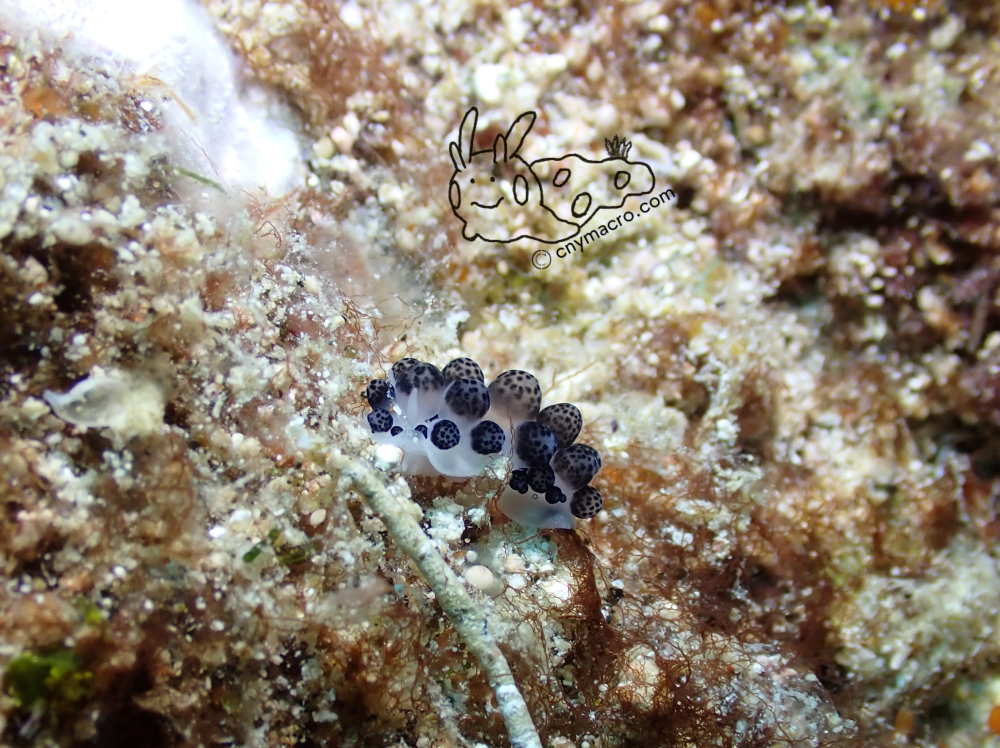
Scientific Name: Ceratophyllidia africana
Common Name: African Phyllidiid
Adult Size: 20 – 40 mm
Depth Range: 5 – 35 m; found on reef slopes and rocky substrates in well-lit areas
Biotope / Habitat: Lives on coral reef surfaces and sponge-covered rocks, often blending into its surroundings thanks to its mottled coloration and bumpy texture
Diet: Sponge feeder; grazes on encrusting sponges, assimilating their defensive chemicals into its tissues for protection
Reproduction: Simultaneous hermaphrodite; mates flank-to-flank and lays a flat, coiled ribbon of eggs on hard substrates near its sponge prey. Larvae are planktonic before settling
Fun Fact: Unlike most nudibranchs, Ceratophyllidia africana has small tubercles tipped with sensory papillae and lacks dorsal gills—the species breathes through hidden openings on its mantle. Its unique structure gives it a striking, sculpted appearance that fascinates macro photographers.
Robust and textured, Ceratophyllidia africana is a distinctive nudibranch whose sculpted mantle and muted tones reveal a different kind of reef beauty. Though it may not dazzle with bright colours, its alien-like form makes it a captivating subject for patient observers and photographers.
